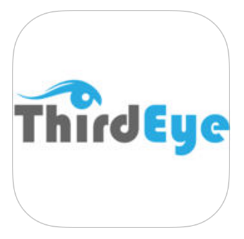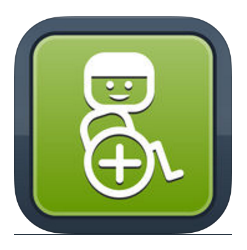How smartphones are revolutionizing assistive technology.
![]() Smartphones have changed the way we live. As the ‘cell phone’ is no longer just a telephone, we are all working to understand the new and interesting ways that our smartphones can facilitate better experiences in the world. This is true for most people today, regardless of any differences in their physical abilities. People with visual, auditory, and/or mobility concerns now have tools available that can help them navigate everyday life with greater ease and enjoy a richer experience.
Smartphones have changed the way we live. As the ‘cell phone’ is no longer just a telephone, we are all working to understand the new and interesting ways that our smartphones can facilitate better experiences in the world. This is true for most people today, regardless of any differences in their physical abilities. People with visual, auditory, and/or mobility concerns now have tools available that can help them navigate everyday life with greater ease and enjoy a richer experience.
 Two different apps—TapTapSee and Thirdeye—both available on iOS and Android use the phone’s camera to take a picture and then describe the contents of the photograph. Blind users and those with vision impairments can use TapTapSee by taking a photograph and then having the program describe the contents out loud. The user can choose to repeat the description, text or email the image to someone else, or post it to social media.
Two different apps—TapTapSee and Thirdeye—both available on iOS and Android use the phone’s camera to take a picture and then describe the contents of the photograph. Blind users and those with vision impairments can use TapTapSee by taking a photograph and then having the program describe the contents out loud. The user can choose to repeat the description, text or email the image to someone else, or post it to social media. 
Thirdeye, in addition to recognizing objects in photographs, provides a ‘Read This’ option to read the language on a sign, menu, or other written print. Both of these give users with vision impairments the ability to engage with technology and their social groups in all the same ways that other users do. A recent review by the North Carolina Assistive Technology Program said “the amount of detail TapTapSee gave me was much more pronounced and specific, and helped form a more accurate picture of my surroundings. TapTapSee is more helpful in distinguishing objects, but Thirdeye is able to read text.”
Just as TapTapSee and Thirdeye transform the smartphone into an auxiliary appendage, ExSilent’s HearYouNow app on iOS offers users a free tool to improve their hearing in many different environments. With HearYouNow, the user plugs his/her headphones into the smartphone and uses the phone’s microphone to better hear what you want and ignore what you don’t. HearYouNow offers an extremely simple user interface, volume for your right or left ear, control over frequency bands, and the ability to focus on nearby conversations or more distant ones. It even allows the user to easily replay the last 20 seconds if they feel they have missed part of the conversation.
 The smartphone works well as a utility sensory enhancer, but how does it make life easier for someone with mobility problems? With Wheelmap and other apps, users with mobility concerns can view an interactive map that has categorized buildings and public spaces as ‘fully,’ ‘partially,’ or ‘not accessible.’ The maps are by no means complete, but as active users contribute more information, they will become more accurate, relevant, and usable.
The smartphone works well as a utility sensory enhancer, but how does it make life easier for someone with mobility problems? With Wheelmap and other apps, users with mobility concerns can view an interactive map that has categorized buildings and public spaces as ‘fully,’ ‘partially,’ or ‘not accessible.’ The maps are by no means complete, but as active users contribute more information, they will become more accurate, relevant, and usable.
Applications like these makes the smartphone a revolutionary tool for everyone, regardless of their individual intentions or aspirations. App developers are enabling smartphones to assist us in whichever ways we need, no matter what those circumstances may be.